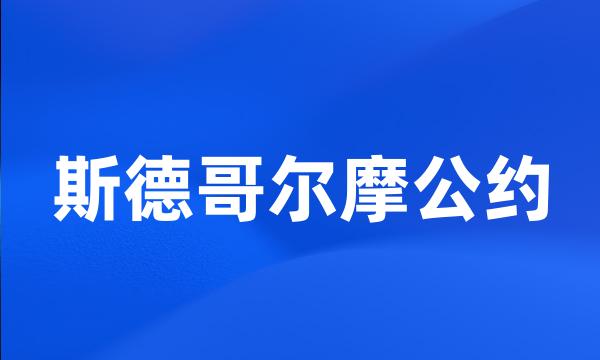斯德哥尔摩公约
- 网络stockholm convention;stockholm convention on persistent organic pollutants;POPs
 斯德哥尔摩公约
斯德哥尔摩公约-
《斯德哥尔摩公约》与持久性有机污染物(POPs)
STOCKHOLM CONVENTION and Persistent Organic Pollutants ( POPs )
-
2004年的《斯德哥尔摩公约》禁止了DDT的使用。斯德哥尔摩公约是一个旨在保护人类健康和环境不受污染的全球公约。
In2004 the Stockholm Convention a global treaty to protect human health and the environment from pollutants banned DDT .
-
作为一种潜在的持久性有机污染物,短链氯化石蜡(Shortchainchlorinatedparaffins,SCCPs)近年来正在接受斯德哥尔摩公约的审查。
As potential persistent organic pollutants , SCCPs ( Short chain chlorinated paraffins ) are under review by Stockholm Convention in recent years .
-
并且在斯德哥尔摩公约首批列入受控清单的12种持久性有机污染物(POPs)当中,历史上曾经生产过6种。
Among the 12 kinds of POPs listed by the Stockholm Conventions , 6 kinds of POPs have been produced in Chongqing historically .
-
多环芳烃(PAHs)虽然尚未进入《斯德哥尔摩公约》,但是它具备一切持久性有机污染物(POPs)的典型特征。
Polycyclic aromatic hydrocarbons ( PAHs ) is not included in the Stockholm convention , but it has all the typical characteristics of the persistent organic pollutants .
-
因此掌握重庆市POPs分布和排放状况对履行斯德哥尔摩公约以及保护生态环境和人民健康等具有十分重要的意义。
Therefore to study the distribution and diffusion of POPS in Chongqing is of grand significance in fulfilling Stockholm Conventions and in protecting the ecological environment and people health security .
-
DDT是斯德哥尔摩公约列为首批12种受控物质之一,在中国作为船舶防污漆添加剂的用途并没有被公约处给予豁免。
DDT is one of the chlorinated organic compounds for elimination that the Stockholm Convention initially targeted , and there are no specific exemptions available to continue the production and use in China .
-
滴滴涕(DDT)是斯德哥尔摩公约中首批控制的12种POPs之一,由于过去大规模的生产造成了大面积的污染场地,残留有高浓度的DDTs其修复问题亟待解决。
DDT is one of the first control POPs mentioned in Stockholm Convention . The large scale contaminated sites formed due to the production of DDT pesticides in the past . The high concentration DDTs should be removed as soon as possible , to prevent the hazards caused by them .
-
中国履行斯德哥尔摩公约对环境化学研究的需求分析
Some Key Aspects of Environmental Chemistry on Implementation of Stockholm Convention in China
-
这两个项目构成了中国落实《关于持久性有机污染物的斯德哥尔摩公约》的持久性有机污染物规划的基础。
The projects form the foundation of the China POPs program to implement the Stockholm Convention .
-
《关于就某些持久性有机污染物采取国际行动的斯德哥尔摩公约》及其谈判背景
The Stockholm Convention on Implementing International Action on Certain Persistent Organic Pollutants and the Background of Its Negotiations
-
在启动两个示范项目的同时,中国正在最后确定淘汰所有《斯德哥尔摩公约》针对的十二种持久性有机污染物的“国家实施计划”。
In parallel with launching the two demonstration projects , China is finalizing a National Implementation Plan to phaseout all twelve POPs targeted for elimination under the Stockholm Convention .
-
它们将会为实现消除持久性有机污染物氯丹和灭蚁灵带来有益的经验,不仅有益于中国,也有益于全体面临类似挑战的《斯德哥尔摩公约》签约国家。
They will generate useful lessons for complete elimination of PCBs , chlordane and mirex not only in China but in all other Stockholm Convention countries facing similar challenges .
-
二恶英和呋喃被称为环境激素,是被联合国2001斯德哥尔摩公约禁止或限制的12种持久性有机污染物中的2种,它们能严重损害人类和高级动物的内分泌和生殖系统,并具有致癌性。
Dioxin and furan , the so-called environment hormones , are two of the 12 permanent organic pollutants forbidden or limited by 2001 Stockholm Agreement of UN . They can seriously injure the gland excretion system and genitals system of human and high animals .
-
作为斯德哥尔摩国际公约缔约国之一,查清我国持久性有机污染物的主要来源和环境污染分布水平,逐步削减二恶英等持久性有机污染物的排放,是我国履行该条约的必须责任和义务。
China , as one of the Stockholm International Convention parties , has responsibilities and obligations to define the major source and environmental pollution distribution of POPs , finally aiming to reduce the emission .
